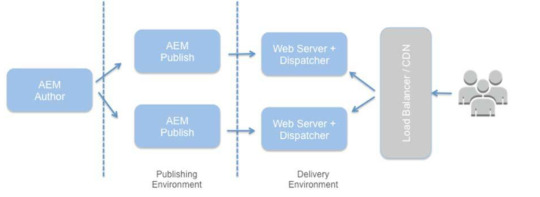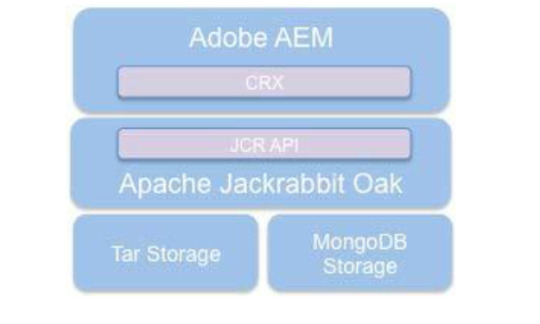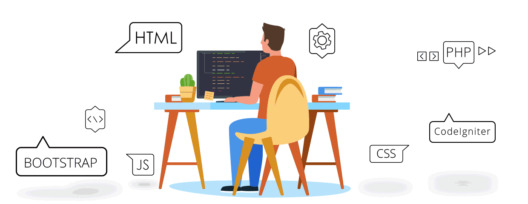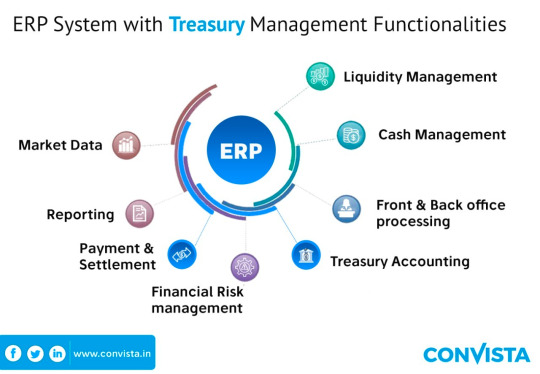#Java Solutions Provider
Explore tagged Tumblr posts
Text
#Software Development Services provider Company#software development services#customized software solutions for businesses#customized software solutions#Java#C#Python#and PHP.#Custom software development#Web development#Mobile app development#software development services provider
0 notes
Text
Custom Web Development by Sigma Solve

#Augment your team with our On Demand Developers with White Glove Services Expertise with Microsoft.NET#Java#Php#RoR & Python#Developers On Demand#We are proud to employ over 125 in-house developers with software development experience across different industries. WE are a one stop sho#technological challenges and availability.#Product Support#We partner with other industry leaders to deploy superior software solutions for our clients. Our certified developers are capable of imple#seamlessly integrating it to your organization as well as providing support for any future upgrades. Our dedicated team of web design and d#front-end and back-end developers and marketers that are experienced will help you drive your vision. Once you outline your goals our deliv#get consensus from all stakeholders#identify a technology platform and determine milestone and timelines.#Our approach#Sigma Solve Inc can take direction and implement a solution that will be a living and breathing application based on your vision and requir#Branding & Story Development#At Sigma Solve#Inc#we work with you to develop the most important visual and written aspects of your brand. Through a variety of graphic design and content st#The voice#tone and personality of your web or mobile product#Your competitive differentiation and value proposition#The target audience’s direct needs and goals and how your company solves for the#customcmsdevelopment#custom ecommerce development services#custom web development#magento web development#web development services#ecommerce web development
0 notes
Text
Amazon Web Service & Adobe Experience Manager:- A Journey together (Part-2)
In the fist part we discussed how one day digital market leader meet with the a friend AWS in the Cloud and become very popular pair. Also what gift they bring for the digital marketing persons.
Now AEM asked to come to my home.
So AEM insides about its parts and structure explored.
AEM Platform :

AUTHOR:-
The content and layout of an AEM experience are created and managed in the author environment. It offers features for authoring content modifications, reviewing them, and publishing the approved versions of the content to the publish environment.
PUBLISH:-
The audience receives the experience from publishing environment. With the option to customize the experience based on demographics or targeted messaging, it renders the actual pages.
Both AUTHOR and PUBLISH instances are Java web applications that have identical installed software. They are differentiated by configuration only.
DISPATCHER:-
Dispatcher environment is the responsible for caching (storing) content and Load balancing.Helps realize a fast & dynamic web authoring environment.
Mainly dispatcher works as part of HTTP server like Apache HTTP. It store as much as possible static content according to specified rules.
So end user feel faster accessing of content and reducing load of PUBLISH. The dispatcher places the cached documents in the document root of the web server.
How AEM Store Content in Repository:-
AEM is storing data without any discrimination as it treated all the family member (data) are content only . Its following philosophy of "everything is content" and stored in the same house(Repository).
Its called CRX i.e. implementation of JCR coming from parent Content Repository API for Java and Apache Jackrabbit Oak.

The basement(base) of the building is driven by MK MicroKernels as in the picture its Tar or MongoDB. The Oak storage layer provides an abstraction layer for the actual storage of the content. MK act as driver or persistence layer here. two way of storing content , TAR MK and MongoDB MK.
TAR--> tar files-->segments
The Tar storage uses tar files. It stores the content as various types of records within larger segments. Journals are used to track the latest state of the repository.
MongoDB-->MongoDB database-->node
MongoDB storage leverages its sharding and clustering feature. The repository tree is stored in one MongoDB database where each node is a separate document.
Tar MicroKernel (TarMK)--for-->Performance
MongoDB--for-->scalability
For Publish instances, its always recommended to go with TarMK.
In more than one Publish instance each running on its own Tar MK then this combination is called TarMK Farm. This is the default deployment for publish environments.
Author instance is having freedom to go with either TAR or MongoDB. it depends on the requirement, if its performance oriented and limited number then it can go with the TarMK but if it require more scalable instances then it would go with the MongoDB. TarMK for a single author instance or MongoDB when horizontal scaling.
Now story of TarMK with Author, a cold standby TarMK instance can be configured in another availability zone to provide backup as fail-over.
TarMK is the default persistence system in AEM for both instances, but it can go with different persistent manger (MongoDB).
Gift of TarMK:-performance-optimized,for typical JCR use cases and is very fast, uses an industry-standard data format, can quickly and easily backed up, high performance and reliable data storage, minimal operational overhead and lower total cost of ownership (TCO).
Now story of MongoDB it basically come into picture when more hands required, means more user/author (more than
1,000 users/day, 100 concurrent users)and high volumes of page edits required. To accommodate these horizontal scalability required and solution is with MongoDB. It leverage MongoDB features like high availability, redundancy and automated fail-overs.
MongoDB MK can give lower performance in some scenario as its establish external connection with MongoDB.
A minimum deployment with MongoDB typically involves a
MongoDB replica consisting of
1)one primary node
2)two secondary nodes,
with each node running in its separate availability zone.
AEM--store--binary data--into ---data store.
AEM--store--content data--into ---node store.
And both stored independently.
Amazon Simple Storage Service (Amazon S3) is best high performant option for shared datastore between publish and author instances to store binary files(Assets like image etc).
Continue....
3 notes
·
View notes
Text
Clariwell Global services Classes
Clariwell Global Services provides best online courses like software development course, java courses. Clariwell Global services is situated in Pune Magarpatta , Amanora Mall
CLARIWELL is known for Best Clinical Research Course in Pune along with Digital Marketing Courses, Web Development Course, Software Developer Course, Java Training, Full Stack Development Course and many more. We offers excellent opportunities for Individuals to upgrade themselves in all the possible ways to be successful in their professional career. We do provide services for Software Development, Web Development, SEO, SMO, ORM, Digital Marketing, Complete Business Solution, IOT based automation. We believed in next generation education system working with the principles of Ed-tech and applied it in all our training's to become a top training institute for Clinical Research and IT Courses in Pune. Clariwell Gives 100 % placements calls and best placements.
2 notes
·
View notes
Text
Top 6 Reasons Why Scratch Coding is Best for Kids?
Everywhere you look, you will find yourself surrounded by digital technology. These technologies are swimming in an ocean of codes and programs. Children of this century are born into this ocean of programming language and learn to swim in it from a very young age. The introduction to this digital world usually starts with their fascination with video games, and they gradually learn to navigate various applications. The importance of teaching kids to learn computer programming and coding language has gained much prominence among parents, children, and educational institutions. Scratch for kids is the best coding language used by many to introduce a child into this world of coding.
Introduction to Scratch
MIT Media Lab and Playful Invention Company developed Scratch, which is now moderated worldwide by Scratch Foundation, a non-profit organization. They provide this visual block-based programming language for free to beginners who want to develop their coding skills in countries all over the world.
Since it uses a visual method for teaching kids coding, it is a fun way of learning that allows them to create their own games, animations, stories, or other ideas using computational thinking. Moreover, the block-based approach of Scratch coding helps to make learning simpler compared to other coding languages like python or Java. The code blocks resemble puzzle or lego pieces that need to fit appropriately for the program to work, and all a kid must do is drag and drop them.
Top 6 Reasons for Kids to Use Scratch Coding
If you are a kid, using Scratch is the best way to start your coding lessons, and here are a few reasons why:
1) Have Fun Interacting with Scratch:
If you want a coder's life, then Scratch is the best option to start the journey in a fun way that is also highly interactive. Scratch programming is an enjoyable way for kids to create their own games, stories, or animated characters by interacting with scratch characters called sprites. They can make these characters jump, run, sing and dance in real time with the interactive interface. Furthermore, MIT has developed a more straightforward form of Scratch called Scratch Jr, which allows kids to work on various scratch projects by creating their backgrounds and stories. Scratch Jr is available for use on android, Chromebook, and iOS.
2) Scratch Develop Problem-Solving Skills:
This program is the starting point for children to develop and enhance their problem-solving abilities as budding programmers. It uses visual aids to make kids understand the issue and uses problem-solving skills to get the results they want in the creations. Coding scratch programs requires breaking down a problem into smaller sections and then solving it to make it work. Scratch needs the kid to use basic mathematics to find a solution to problems. Moreover, it teaches and promotes using this skill set even in the real world when they face difficult situations.
3) Promote the Creation of Innovative Ideas from Scratch:
Promoting imagination is one of the key focus of the Scratch team, and the program encourages children to use their thinking skills to come up with new innovative ideas of creation. Kids can customize existing sprites or create one on their own. They also have the option to add media like music, graphics, and voices to them using simple programming syntax. This programming language is the perfect platform for a child to use their imaginative skills and easily produce what is there in their minds. The kid can create an entirely new scratch coding game using to program available on the Scratch website.
4) Scratch is Simple to Use and Grasp:
Scratch programming language is so simple and easy to grasp that kids of a very young age can use the program. They can develop coding games with an easy understanding of the fundamentals of coding blocks. The concept behind Scratch is to make learning coding language effortless for children without any sophisticated tutorials. This programming language requires kids to drag and drop the blocks to create a desirable action in the scratch project.
5) Better Planning and Logical Thinking with Scratch:
Logical thinking and planning are two crucial skill sets that you, as a kid, will improve with Scratch. For example, the ability to break down a problem into smaller segments and then create a plan to organize the lego-like code blocks better promotes an analytical thinking process. Scratch for kids, which involves a game development project, requires both these skill sets, and the child can improve them even for real-world projects.
6) Scratch is the Gateway to the World of Programming:
Many coding classes for kids start with Scratch as the starting point for budding coders. Academic institutions like primary and high schools have introduced Scratch as part of their computer science curriculum. The similarity of Scratch with other programming languages like javascript or python makes it an ideal gateway to the world of comprehensive programming. Children learn the importance and function of commands to understand more complicated coding in the future.
Summary
Using Scratch programming is one of the easiest ways for you as a kid to enter the ocean of coding. All that you require is a computer with an internet connection. Then, you can open the scratch website in your web browser and start your coding journey with the easiest of any visual block-based programming language you can find. The benefits of Scratch are many, and it helps a kid develop all of them with innovative learning methods.
#scratch coding#scratch programming#scratch coding game#scratch computer programming#coding scratch#scratch code#scratch tutorial for kids
2 notes
·
View notes
Text

Whether or not you experience your morning jolt or had been craving a 2d round after lunch, this newsletter will provide you with a few great suggestions and advice at the one of a kind kinds of espresso you ought to enjoy. There are many specific kinds of coffee you may drink, whether or not for taste or caffeine. This guide will outline the one-of-a-kind varieties of espresso and their traits. You’ll find out about darkish roast, mild roast, flavored coffees, decaf, and more. What roasting ranges are high-quality for distinctive coffee sorts roasting levels are a large thing on the subject of specific espresso types. As an example, lighter roasts are great for coffees which have a low acidity, while darker roasts are better for coffees with a higher acidity. There’s no person-length-fits-all solution to this question, because the first-rate roast for every coffee will vary relying on its taste profile and alternatives. But, right here are a few trendy guidelines that will help you pick the proper roast degree on your specific cup of joe:
for low acid coffees: choose a mild roast in case you’re seeking out a espresso with low acidity. Those roasts tend to have a milder taste and less caffeine than darker roasts. For better acid coffees: choose a dark roast in case you need a coffee with greater caffeine and a stronger taste. These roasts can be barely greater acidic than mild roasts, which provides complexity and intensity to the cup. All the specific coffee kinds espresso is a beverage that has been loved for centuries, and there are many distinct styles of coffee to choose from. This guide will outline the extraordinary varieties of espresso to be had and help you pick out which one is first-rate for you. Arabica espresso: arabica beans are the maximum popular type of espresso and are used to make maximum commercially available coffee. Arabica beans are milder than robusta beans and are used to make aeropress espresso, french press coffee, and other pour-over strategies. Arabica beans tend to be much less high-priced than robusta beans, but additionally they produce a weaker cup of coffee. Robusta espresso: robusta beans are the second maximum famous form of coffee, and that they’re used to make espresso drinks, turkish coffees, and different strong liquids. Robusta beans include more caffeine than arabica beans, that may cause them to more stimulating. They’re also extra highly-priced than arabica beans. Java coffee: java espresso is crafted from roasted java seeds which have been mixed with water. Java coffees have a tendency to be mild and fruity tasting, and they’re frequently preferred by way of those who need a short caffeine enhance within the morning. Java coffee is commonly much less costly than other kinds of coffee. What you should recognise approximately brewing your very own espresso if you’re like most people, you probable drink espresso out of a can, cup, or bag. However what in case you want to make your own? Or if you simply want to discover different types? On this guide, we’ll train you all about the unique kinds of coffee and how to brew them. First, allow’s communicate about the distinctive forms of coffee. There are 3 major types: arabica, robusta, and hybrid. Arabica is the maximum commonplace type and is used for maximum business coffee merchandise. Robusta is a more potent form of arabica and is used for coffee. A hybrid is a mixture of arabica and robusta and is used for mixed coffees. Now that we understand what types of coffee there are, permit’s speak approximately a way to brew them. You can either use an electric coffee machine or a stovetop pot. Stovetop brewing is greater popular because it’s easy and mess-loose. Simply placed water inside the pot, add your beans, and wait till the water boils. Then press the plunger down to extract the espresso grounds. Simply make certain no longer to overheat your pot in any other case your beans gets burnt. In case you’re like maximum espresso drinkers, you’ve in all likelihood got your hands on some exceptional types of coffee beans. But if you’re now not quite sure what all the ones phrases mean, or which kind of espresso is best to your flavor, this guide is for you. So whether or not you’re seeking to switch up your morning recurring or want some new ideas for snacks and drinks, study on to learn about the other one of a kind varieties of coffee available! We endorse which you attempt bean’s suitable coffees. They taste extraordinary!
Bean Good deals in coffee, Flavoured coffee, Cappuccino, Espresso, Americano, Coffee beans, Coffee powder, types of coffee, Iced coffee, Instant coffee, Cold coffee, Best coffee, filter coffee maker, Coffee break, Black coffee, Bean good coffee, best coffee brand india, chocolate coffee, Cold coffee flavours, coffee concentrate, etc.
#coffee#Flavoured coffee#Cappuccino#Espresso#Americano#Coffee beans#Coffee powder#types of coffee#Iced coffee#Instant coffee#Cold coffee#Best coffee#filter coffee maker#Coffee break#Black coffee#Bean good coffee#best coffee brand india#chocolate coffee#Cold coffee flavours#coffee concentrate
4 notes
·
View notes
Text
Are you looking to Hire Knowledgeable Backend Developers?

RichestSoft is a leading web and mobile app development company based in the United States. Our backend development services are all about creating a seamless solution, meeting the demands of the market and providing a pleasant experience. We offer a diverse range of backend development services that include building custom backend layers, enabling cloud integration, helping drive enterprise growth, and more.
Have a look at our Hire Backend Developers:-
Hire .NET Developers:- We can meet your .NET Development Services requirements with utmost precision. We aim to serve a greater number of customers with seamless solutions.
Hire PHP Developers:- Our PHP experts utilize their extensive skills and builds to build stable, dynamic, and integrated PHP applications that add value to your business and facilitate the growth of your business.
Hire Node.JS Developers:- With our Node.js development services, we build lightweight, scalable, and seamless applications. Embrace the benefits of this blazing-fast platform with Clarion.
Hire C++ Developers:- Our developer team is a reliable and ideal partner in C/C++ development services for various types and purposes. We also provide cross-platform app development, maintenance, and app porting.
Hire JavaScript Developers:- We provide JavaScript development services that provide future-proof solutions and effectively meet dynamic business and market needs.
Other Technologies:- Apart from this, we also provide backend development services for technologies like Ruby, Java, Python, VBScript, Functional Programming, etc.
2 notes
·
View notes
Photo

ConVista Consulting is one of the leading companies in the IT and Business Consulting sectors. With our holistic approach, we provide a range of services to support clients’ processes, methods, and technologies. As we work in partnership with our clients to implement business strategies and optimize processes through software integration and development, we provide solutions based on SAP, Microsoft, Java, and other renowned technologies. In addition, we also provide project, quality, and change management services.
#The SAP Experts#SAP Consultant Asia#The SAP Expert in Asia#The SAP consultant in Asia#Best SAP Consulting in Asia#SAP Consultant in Bangalore#SAP ERP Consultant#SAP Analytics Cloud#SAP S4 for Insurance#SAP s/4hana finance#SAP Consultant in India#SAP data Analytics#SAP Digital Transformations#SAP Multi Bank Connectivity#Become a Smart Enterprise with SAP Analytics Cloud (SAC)#Digital Transformations#Artificial Intelligence
2 notes
·
View notes
Text
Best Most Web Design Company In Chennai - iStudio technologies
We at iStudio Technologies provide Best Web Design services in Chennai, producing lucrative website designs that inspire and turn the target audience into your customers. During this digitized era, having a website is no longer prestigious and expensive; rather, now it has become simply a part of businesses.
Being a professional website designing company in Chennai, we are designing magnificent, industry-specific designs that make a perfect match for the digital platform of our client and help them gain valuable clients.
Our Services Web-Design-Web-Development Web Design We are the most experienced and highly trusted Web Design Company in Chennai. With 13+ years of experience our best professional team design both static and dynamic websites starting from small startups to large enterprises. Different technologies like wordpress, Joomla, Typo3, CMS, UI/UX are used for delivering unique and robust web design. We ensure your digital presence looks good to provide your web users a great user experience across any device. Web Development In digital transformation, cloud computing is most important that is termed as web development. We offer various application development services for startups and enterprises. We provide tailor-made web applications including e-learning portals, ERP, CRM, marketplace portals, payment gateway integration, third party API integration, etc., with solutions provided for all of these. Unlike other companies we implement security standards as core web application feature. We are having expertise in PHP, JAVA, .net and with latest JS frameworks like Angular, ReactJS, NodeJS based web applications.
#webdesigncompanyinchennai#webdesign#web developing company#webdevelopment#iStudiotechnologies#webdevelopmentcompanyinchennai
3 notes
·
View notes
Text
USA job posting
Hi Everyone, Hope doing good We are providing practical online #LIVE training and placement on #IT Technologies and non IT Technologies Free training on python,ui and dot net #direct marketing # resume guidelines We provide tips for interview and also provide project based training. We could provide quick placement on# IT Technologies. And #non IT technologies # salary hikes #open pay rate We are looking for candidates with proper work authorization in USA. We work on java, java ui, .net, python, salesforce, devops, data science and QA Selenium Join with magnus technologies solutions make your dreams come true Interested candidates, please call me or message me Ph no:(469)421-7003 Wats up :(469)421-7003 Email id:[email protected]
2 notes
·
View notes
Text
Best Software Development Institute in Hyderabad
7iTech Solutions is a reputed institute which has been providing world-class training to thousands of students every year. We provide the best training in Hyderabad for software development, digital marketing ,Full stack web development ,App Development ServiceNow, Salesforce, AWS ,JAVA, PYTHON ,PHP, If you want to be successful at work, it’s important to make sure you actually have the skills your employer wants. That’s why 7iTECH is here. We provide extensive training programs, so they can get hired with confidence we have a dedicated placement team which helps you find jobs in one of our partner companies.

#web development#app development#fullstack#fullstackdeveloper#java#python#php course#digital marketing
2 notes
·
View notes
Text
Top 5 Website Designing Company in Ghaziabad
Having a website allows you to add a widget to the page, create an RSS feed to keep your following up to date on the newest news, use commentary to collect and reply to valuable consumer feedback, and post connections to your point on forums and blogs. A variety of other methods are available to help you raise brand recognition.
In India, there are several website designing companies. Rather than spending money on expensive offline and online advertisements, you ’ll invest in SEO creation of your page, which will yield long- term prices because the money you spend to promote your page is money well spent.
The first thing to note is: Web development and web design are two different terms.
What Makes Web Development and Web Design Different?
Web Design
Web design comes before web development. It deals with the overall appeal of the application and includes implementation of multiple concepts like UI (User Interface) Design, UX (User Experience) Design, SEO (Search Engine Optimization), web graphics design, etc. through standardized coding. Most commonly used web design software includes Adobe Dreamweaver, Figma, Flare, Squoosh, and Linksplit.
Web Development
Web development follows the web design process to finish the technical building. Web development has two main components – front-end development and back-end development. The client-side or front-end development involves the website interface building. Common tools are Bootstrap, CSS, JavaScript, and HTML 5. The server-side or back-end development keeps updating as the database expands. Tools like Java, Python, PHP, and .NET are popularly used.
As you can see, working with a website designing company is essential. But before you sign a deal with just any provider out there, it’s important to do your due diligence and select the best website Designing Company in Ghaziabad.
Your website says a lot about your company’s profile. Therefore, it must be impressive and outstanding.
Below, we have compiled the top 5 website designing companies in Ghaziabad list. All of the ones we’ve picked can assist you with building the perfect website you’ve always imagined in your mind, the kind that will keep on driving sales like clockwork even while you sleep:
Eternity Global Technology- Eternity Global Technology is a reliable and trustworthy website designing company in ghaziabad that offers accurate and professional website development services within a budget to leverage and grow your online business. They recognize the exact demand of the client and produce websites with excellent strategy and planning. The company has worked with so many worldwide clients. Their team of mobile strategists, UI/UX Designers, and software engineers have developed mobile and digital solutions for global clients. The company is offering web and app development, chatbot development, software development, UI/UX, and also working on the latest technologies.
Address- Business lounge, basement, GC Grand, Indrapuram, Ghaziabad, Uttar Pradesh, 201014
Email- [email protected]
Phone No.- +91-9808504655
Website- https://eternityglobaltechnology.com
Mmbo- Mmbo was established in the year of 2011. It always goes with the best technology. Because of the customer-centric approach expanding at a rapid pace, it emerges as the best platform. They have been catering in this field for the past 5 years. They do have a data-driven digital marketing company following an objective emphasized approach backing a team which does not only studies but also understands the access touchpoints of brand customers.
Address- B1/638 A, 2nd Floor, Janakpuri, New Delhi, Delhi 110058
Email- [email protected]
Phone No.- 91-9999677947
Website- mmbo.in
Minddigital- Minddigital has almost 175+ customers dedicated to serving the best services. It has some amazing clients on its list. Everything is done in an ideal manner since they emphasize every aspect such as development, digital marketing, and so on. It has done a total number of 425+ projects for clients. They always do identify the customers’ needs and requirements to understand everything about that. Whether it is Dubai, London, New Delhi, or New York, everywhere they are known for its commitments. They always follow the guidelines to get the best results.
Address- D-169 Okhla Industrial Area,Phase 1, New Delhi – 110020
Email- [email protected]
Phone No.- 91-1588291395
Website- minddigital.com
Dselva- Dselva is a reputed platform offering the best services to its customers. They hold a broad spectrum of platforms. The vision statement revolves around integrity, sincerity, service, competences, kindness, growth and so on. Today’s era is characterized by dynamic, yet emphasizing IT partnerships. Companies have been hunting to work with offshore technology vendors which impart more than just cost arbitrage. They deliver a strong value proposition indeed. Clients require best-in-breed services and solutions which are implemented in an integrated manner.
Address- Chaudhary Complex, Ist Floor, Opp. Kamayani Hospital NH-2, Sikandra, Corporate Office
Email- [email protected]
Phone No.- 91-7500048899
Website- dselva.co.in
Olive- Olive is a reputed platform adhered to serve the best without compromising the quality. Olive never disappoints its customers ever. It is time to invest a good part of your marketing budget on digital. You completely want to be heading right into more profound as well as accurate solutions indeed. The insights need to approach these solutions to come with rigorous as well as intuitive research and analytics. Being a player in this competitive environment, you require to know the hidden opportunities your brand possesses.
Address- B-1/H-2, Mohan Cooperative, Mathura Road, New Delhi – 110044
Email- [email protected]
Phone No.- 91-9650503679
Website- olive.in
We hope you got an idea of the top 5 website designing company in Ghaziabad. Comment below for more updates.
3 notes
·
View notes
Text
Why you should learn flutter in 2022?

Before we go into why you should learn Flutter, there are a few things you should know about it. Google released it as an open-source cross-platform application development kit in May 2017. The ability to build programs for iOS, Android, the Web, and desktop is referred to as “cross-platform.” If you use Flutter, you won’t have to create and manage two different mobile apps for iOS and Android. This translates to decreased development costs. To get started on your project, you don’t require more than one developer. There will be no discernible difference between a Flutter and a native app. The widgets in Flutter may easily be customized to provide a user-friendly experience for your clients.
Even though native app development continues to reign supreme, cross-platform development has become the new standard. Furthermore, because cross-platform apps are easier to build and maintain, a growing number of medium-sized and small businesses are adopting cross-platform development. This means that the same code may be used to create Android and iOS apps. Flutter features a vast range of widgets and animation capabilities that may be utilized to construct almost any type of application. Flutter makes use of Dart, a programming language that is also a fundamental component of Flutter and is used to construct Android and iOS apps. Flutter is quicker and more efficient than React Native since it doesn’t need to connect with the platform via JavaScript.
Using some of the most popular cross-platform frameworks may potentially assist you in obtaining employment. Google’s Flutter, which was recently upgraded, is one of the most well-known cross-platform development frameworks.
Advantages of learning Flutter:
Faster Development: Flutter promotes quick development and saves developers a significant amount of time. You may simply build a distinctive UI/UX design for your apps by combining a range of enrichment widgets. Furthermore, Flutter makes it simple to integrate updates and immediately handle issues. Furthermore, testing and deployment of the app take less time when using Flutter. In comparison to its competitors, Flutter is a more efficient development platform.
To summarise, you don’t need to write platform-specific code to achieve the desired aesthetics for your program. Without the requirement for a native app comparable, Flutter may be used to create any 2D-based UI. Even though Flutter includes a declarative API for creating user interfaces, I’ve found that it boosts performance dramatically. This is the most obvious when it comes to making aesthetic changes.
Hot Reload: Flutter is getting more popular among smartphone developers because of its rapid reload feature. Hot reload allows code changes to be visible instantly on emulators, simulators, and real-world devices. It only takes a fraction of a second to reload the updated code. Because the program is already running, developers don’t have to waste time restarting it. As a result, creating UIs, adding new functionality, and fixing bugs are easier. Even if an issue happens, some programs may be patched and used as if nothing had happened. If a complete app refresh is required, it won’t take long, reducing development time.
Larger User Base: Imagine that if you have a programming problem, no one is around to assist you in figuring out what went wrong. What do you want to do as a developer? A Google or browser search for your error will turn up a similar problem with an acceptable solution. This is also when the Flutter community comes in handy! On QA sites like Stack Overflow, the Flutter developer community has developed dramatically in recent years.
Easier to Learn: Flutter is easier to learn than Java, and it’s a lot more useful if you already know Java. Additionally, you must be familiar with the Dart programming language because Flutter is written in it. Starting with the official documentation and video lectures is an excellent way to learn Flutter. It is advised, however, that you attend a course on the topic so that you are familiar with its operations from A to Z. It’s reasonable to predict that Flutter will soon dominate the mobile app development industry, which should answer your question about why Flutter is the best platform to learn on in the short term.
As more people transition to designing native apps, which Flutter is a fantastic solution for, the demand for Flutter developers is constantly increasing in the employment market. Even seasoned programmers with years of experience in the area are finding Flutter to be more user-friendly.
Why choose Baabtra’s Flutter Course?
The three-month Baabtra Flutter Course is built with one goal in mind: to ensure that anyone who completes it is well-equipped with all of the required skills to obtain a Flutter developer job right away. Flutter will allow you to construct native-looking Android and iOS apps. You’ll also learn how to solve a frequent job interview programming challenge as a bonus. This course will show you how to use Flutter to quickly create high-quality, interactive mobile apps for iOS and Android devices, as well as how to customize your app with rich and configurable widgets, built-in animations, and a layerable, extensible framework. Listed below are some of the most important reasons why thousands of students select Baabtra.
In a short period, you will learn how to design applications for a range of platforms.
Learn how to create iOS, Android, and other platform apps.
Learn how to use a single code base to create iOS and Android applications.
Acquire a thorough knowledge of Google Flutter’s core ideas.
Learn about one of the most rapidly evolving technologies and distinguish yourself from the crowd.
You will receive instant placement help after completing the course.
Flutter’s popularity is growing as more people use it to construct mobile apps. Flutter is outperformed by other cross-platform application development platforms. As a result, the community is seeing an increase in programmers. The Flutter community is likely to improve the framework, and it will eventually win the race. Flutter can supplant the current crop of native application development frameworks. The Flutter team has worked diligently in the years thereafter to improve and expand on the basic package it started with.
On Flutter, there are no limitations like there are on native platforms. It is possible to incorporate the native codebase. It does, however, need special code written by a developer in programming languages such as Java and C. By 2021, the flutter craze is expected to skyrocket in popularity. As stated in this piece, there are multiple reasons why Flutter is a huge deal in the cross-platform app development world. Flutter is a mobile app development framework that deserves to be at the top of the list.
Enquire now !!👇 https://bit.ly/3Igg4Z5 . Follow us on: Facebook: https://lnkd.in/gezVM78A Instagram: https://lnkd.in/gWMMtQMe LinkedIn: https://lnkd.in/gqZFN9rR Twitter: https://lnkd.in/g_Dd5tKk
#flutter#app development#software#software developers#it#developers#mobile app development#coding#flutterdeveloper
2 notes
·
View notes
Photo

ConVista Consulting is one of the leading companies in the IT and Business Consulting sectors. With our holistic approach, we provide a range of services to support clients’ processes, methods, and technologies. Working in partnership with our clients to implement business strategies and optimize processes through software integration and development, we provide solutions based on SAP, Microsoft, Java, and other renowned technologies. In addition, we also provide project, quality, and change management services.
#SAP Digital Transformations#Digital Transformations#Artificial Intelligence#The SAP Expert#SAP Consultant Asia#The SAP Expert in Asia#The SAP consultant in Asia#Best SAP Consulting in Asia#SAP Consultant in Bangalore#SAP ERP Consultant#SAP Analytics Cloud#SAP S4 for Insurance#SAP s/4hana finance#SAP Consultant in India#SAP data Analytics#SAP Analytics#SAP Multi Bank Connectivity#Become a Smart Enterprise with SAP Analytics Cloud (SAC)
2 notes
·
View notes
Text
Learn to program with these Coding Cookbooks with practical recipes for development
Learn to program with these Coding Cookbooks with practical recipes for development #coding #programming #sale #java #react #powershell #r #kotlin #python #deeplearning #book #books
Your recipe to programming success. Here’s the link to check out the bundle options. Looking to learn a new coding language or solve a tricky programming problem? Follow the guidance in O’Reilly’s popular Cookbook series, filled with straightforward recipes that provide practical solutions to real-world problems. Learn techniques for Java, C#, Unity, and lots more, and support Code for America…

View On WordPress
2 notes
·
View notes
Text
8 Great Ways to Teach Yourself to Code
“Our world is increasingly run by software and we need more diversity in the people who are building it. More importantly, writing software is about expression, creativity — and practical application,” Liukas told IBTimes UK.

In recent years, coding has exploded. To operate, every website, application, computer program, electric items, calculator, and even microwave relies on code. The number of coding jobs available- will also continue to grow so it is a good time to learn how to code for beginners. As there are plenty of free resources available, it will be helpful for you to learn new techniques and concepts related to coding. Do you want to learn how to code by yourself? If yes, let’s have a look at some points to teach yourself to code:
Over the next 10 years, it is estimated that there will be 1.4 million jobs in computer sciences and only around 400,000 graduates qualified to do them.
Have an honest conversation with yourself: Why do you want to learn to code?

Think about the main reason why you want to learn a programming language, it will just take about a few minutes. Do you want to learn to make a career? Is learning how to code simply something which interests you that you are going to be doing in your spare time? Do you want to create apps? Do you want to learn because your friends are learning? So, think about it.
It will help you determine which programming language you should learn including the time and money you require to learn a programming language. For example, if you want to make any app, you have to learn a different language like- Java, Kotlin, C#, etc.
2. Choose the right programming language

After figuring out why you want to learn a coding language. Now you have to figure out which language you want to learn. You have to figure out which language has more scope, and which interests you most. Different types of programming require different skills. As there is not any best language to learn. HTML and CSS are considered the easiest ones. These are useful for making websites. Also, for making the website more interactive, you will need to learn languages like- Javascript, PHP, SQL, Python. For app development, you need to learn- Java, Kotlin, C#.
If still, you are not able to decide from which programming language you start? Many professionals recommend learning C#, JavaScript, Python, as these languages have more career flexibility. So, just get started learning any language.
3. Watch some videos related to coding

You can find all kinds of videos related to coding. Before enrolling in any courses, watch some YouTube videos about coding. Online videos and video tutorials are great resources that can help you to solve complex concepts related to coding. So, you should prefer to learn from an online coding platform to learn different methods of coding.
4. Try out some online courses

If you want to have more command over any programming language, you can choose any available online courses, it might be a better option. However, many different online classes offer the same programming languages, and it can be hard to figure out which one is truly worth your time and money. Online coding courses are one of the best ways to learn a new programming language.
5. Find a mentor

You might be able to find some helpful online mentors through GitHub, or other developers at a local coding Meetup event or hackathon. If you will be stuck with any kind of complex concepts related to any coding, it will take just a few minutes for them to solve or explain any problems. So, it will be a good idea to find someone who can solve your coding problems.
6. Practice writing your programs

After having a basic knowledge of your chosen language, you will need to practice more and start creating programs and projects. The type of programs and which you will start practicing will depend upon your chosen language. Like- If you are learning how to code a website using HTML and CSS, you might choose to start building your website.
You will be surprised to see your progress once you start learning and practice writing more programs. You must have heard this phrase- Practice makes perfect! And practice will help you to become a successful programmer. Practice, practice, and more practice!
7. Join an Online Community

For newbies, it can be extremely difficult to learn to code on their own, and for that, you sometimes need any support. For instance, if you are learning any language, and you came across any problem related to syntax, and are not able to understand it well, joining an online chat board or coding forum will help you by giving you access to people who will be able to find a solution for your problems.
8. Keep Learning

Programming languages are like any other language, it requires regular practice if you want to become fluent in them. If you don’t practice, you will forget things. Therefore, make sure that you keep learning new things every day. Instead of using the same coding syntax and patterns for every program, start finding new ways and methods to code.
Learning how to code for beginners can be fun and super exciting. Learning how to code can provide you with valuable skills that will be helpful for your career growth. So, it will be good to learn a programming language. Are you going to learn coding from today?
#coding#coding language#programming#programming languages#learn to code#learn to code online#online coding#online coding courses for kids#online coding classes
13 notes
·
View notes